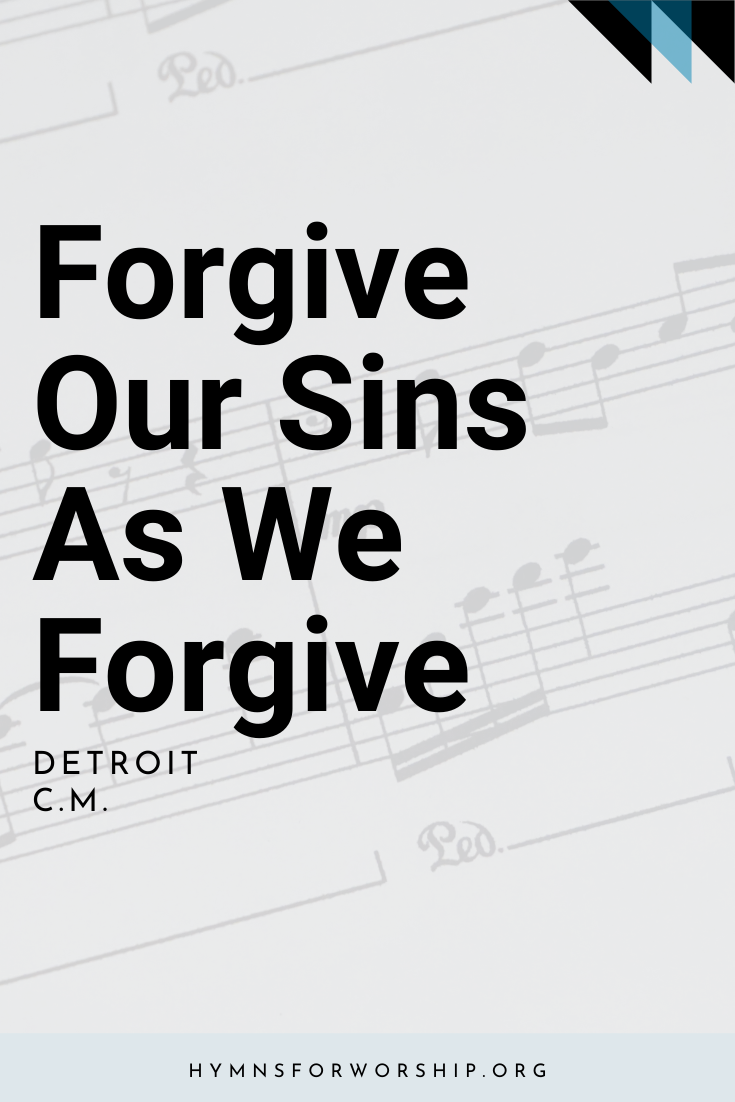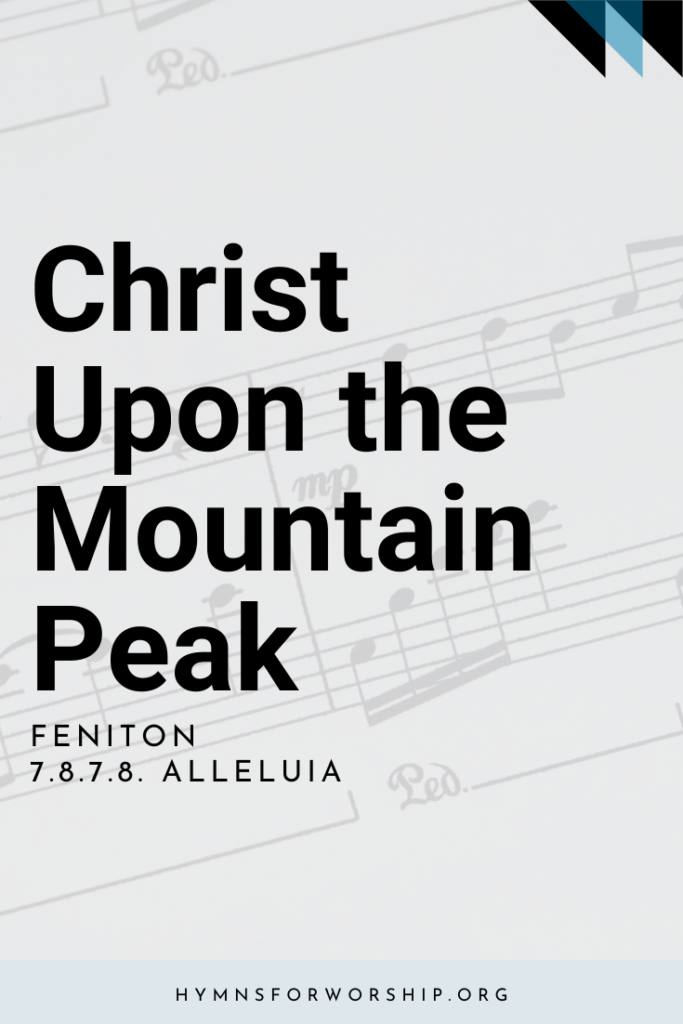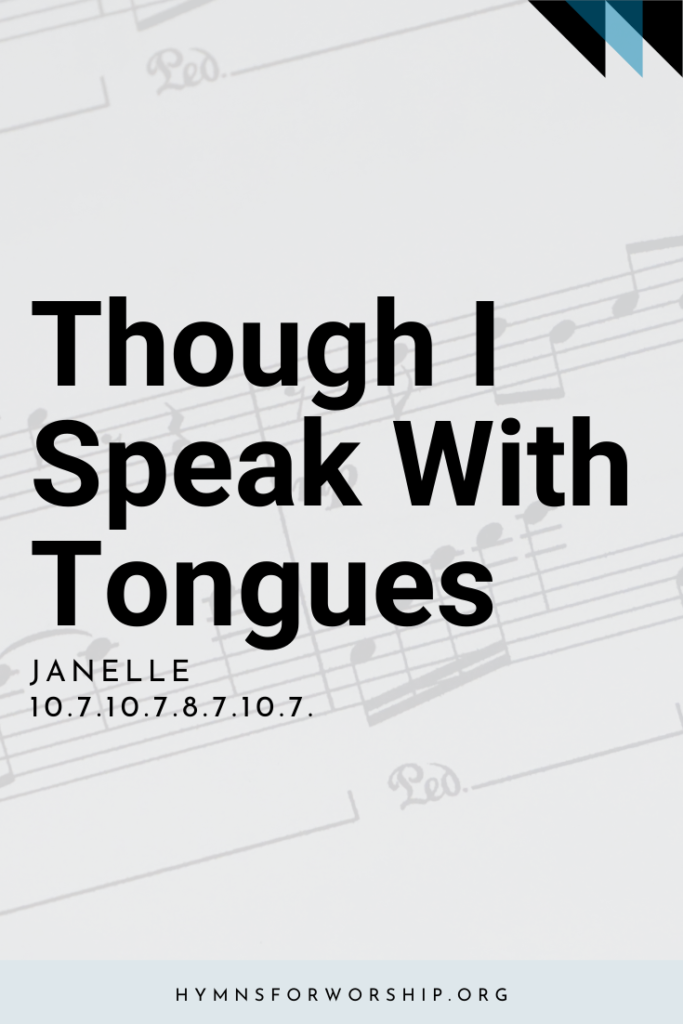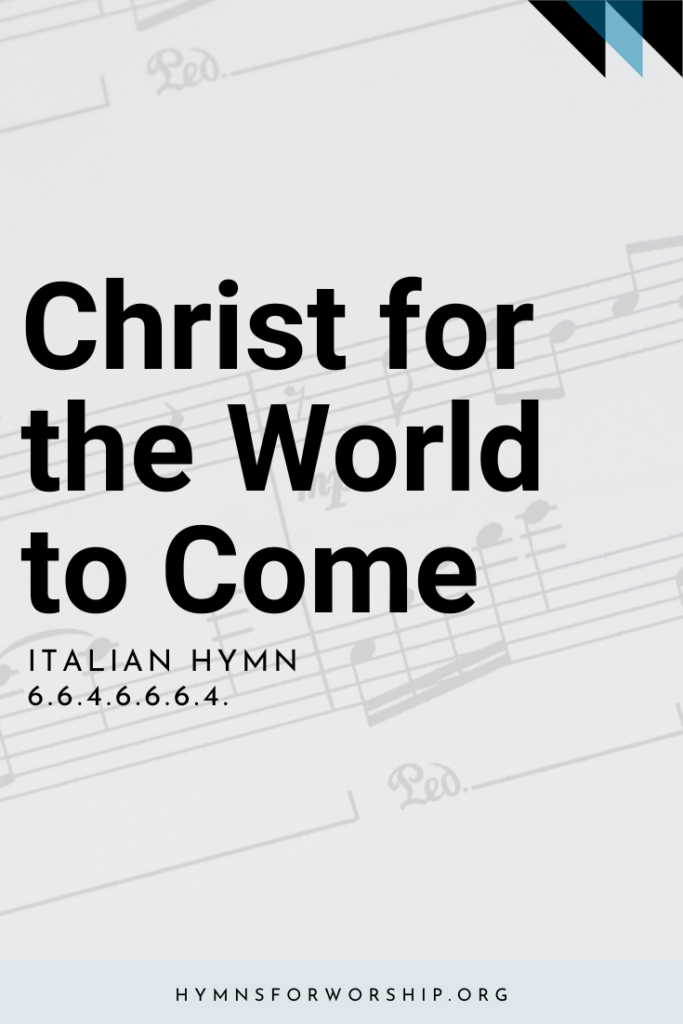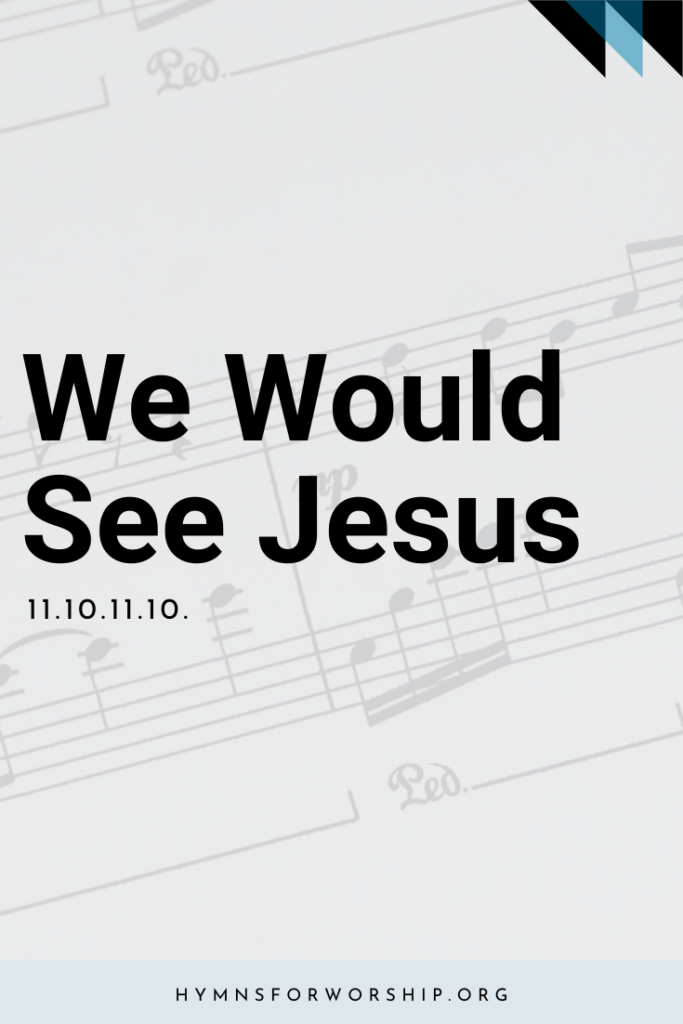GOSPEL >> FORGIVENESS
SDAH 299
“Forgive our sins as we forgive,”
You taught us, Lord, to pray;
But You alone can grant us grace
To live the words we say.


Text
1
“Forgive our sins as we forgive,”
You taught us, Lord, to pray;
But You alone can grant us grace
To live the words we say.
2
How can Your pardon reach and bless
The unforgiving heart
That broods on wrongs and will not let
Old bitterness depart?
3
In blazing light Your cross reveals
The truth we dimly knew:
How trifling others’ debts to us;
How great our debt to You!
4
Lord, cleanse the depths within our souls
And bid resentment cease;
Then, by Your mercy reconciled,
Our lives will spread Your peace.

Hymn Info
Biblical Information
(a) Matt 6:12 (b) Matt 18:35 (c) Matt 18:24, 28 (d) Rom 5:10
Author
Rosamond E. Herklots (1905-1987) alt.
Copyright Information
Words by permission of Oxford University Press. Arrangement copyright 1978 Lutheran Book of Worship. Used by permission of Augsburg Publishing House.
Hymn Tune
DETROIT
Metrical Number
C.M.
Tune Source
The Sacred Harp, Philadephia, 1844
Alternate Tune
MANOAH, SDAH 315
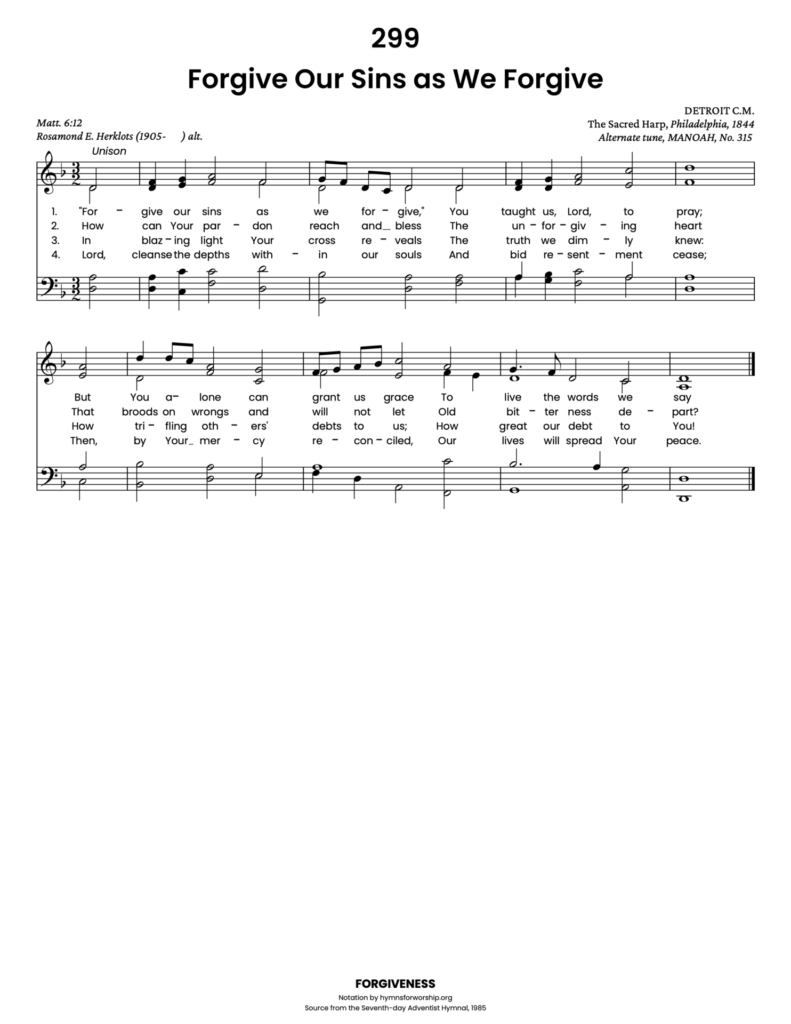
Get the hymn sheet in other keys here
Notes
Make each hymn more meaningful with these helpful tools: Short, ready-to-use hymn introductions for church bulletins, multiple ways to introduce a hymn based on your worship theme and in-depth history and insights to enrich your song service.
Three aspects of intercession discussed in the lesson (1) Praying for our own people — family members, friends, and other people or situations. God hears our prayers and can intervene. Sometimes it may take longer for a prayer to be answered, but we can rest assured that God never forgets the needs of His children. (2) Daniel’s role as intercessor and mediator for the Israelites — the prophet realizes how sinful the people have become as they transgress God’s law and refuse to hear God’s warnings. Thus, recognizing their desperate spiritual condition, Daniel prays for healing and forgiveness. But the prophet also identifies with his people. (3) Christ as our Mediator — “God made him who had no sin to be sin for us, so that in him we might become the righteousness of God” (2 Cor. 5:21, NIV). (Lesson 10, 1st Quarter 2020 – Tuesday, The Value of Intercession, 3/3/2020)

